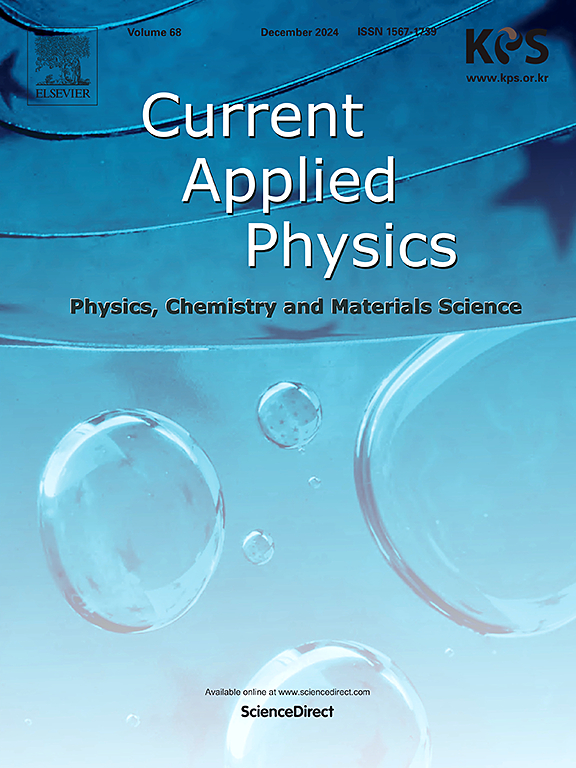A critical review of the refractory high-entropy materials: RHEA alloys, composites, ceramics, additively manufactured RHEA alloys
IF 2.4
4区 物理与天体物理
Q3 MATERIALS SCIENCE, MULTIDISCIPLINARY
引用次数: 0
Abstract
In this study, the traits, production methods, and applications of refractory high-entropy materials—including refractory high-entropy alloys (RHEAs), refractory high-entropy composites (RHE-Cs), and refractory high-entropy ceramics (RHE-Ce)—which are part of the broader category of refractory high-entropy materials with a wide range of applications, have been thoroughly examined and discussed. RHEAs have emerged as materials that exhibit superior properties, such as high melting temperatures, excellent temperature resistance, and high wear and corrosion resilience, in addition to high mechanical and fatigue strength. These attributes have made them extensively studied materials in recent times. The properties of RHEAs suggest their safe operation in challenging environments such as nuclear reactors, gas turbines, aerospace, and energy production. Among refractory materials, RHE-Cs stand out for their high strength and low density, showing significant potential for use in the automotive, aerospace, and space industries. Another group with a wide range of applications, RHE-Ce materials, is distinguished by their high-temperature resilience, high hardness, and low thermal conductivity, making them suitable for high-temperature environments. Refractory materials are generally fabricated using traditional techniques such as arc melting, powder metallurgy, and magnetron sputtering. In this study, along with traditional production methods, additive manufacturing techniques which have revolutionized the manufacturing field are discussed concerning their applications in refractory material production. Additive manufacturing methods enable the achievement of high temperatures and the production of homogeneous, single-phase solid solutions, making them suitable for fabricating refractory materials with high melting points.

耐火高熵材料:RHEA合金、复合材料、陶瓷、增材制造的RHEA合金
在本研究中,耐火高熵材料——包括耐火高熵合金(RHEAs)、耐火高熵复合材料(rhec - cs)和耐火高熵陶瓷(rhee - ce)——作为广泛应用的耐火高熵材料的一部分,其特性、生产方法和应用进行了深入的研究和讨论。RHEAs已经成为具有优异性能的材料,例如高熔化温度,优异的耐温性,高磨损和腐蚀弹性,以及高机械和疲劳强度。这些特性使它们成为近年来广泛研究的材料。rhea的特性表明它们在核反应堆、燃气轮机、航空航天和能源生产等具有挑战性的环境中安全运行。在耐火材料中,rhec以其高强度和低密度而脱颖而出,在汽车、航空航天和航天工业中显示出巨大的应用潜力。另一组具有广泛应用的材料是rhee - ce材料,其特点是具有高温回弹性,高硬度和低导热性,适合高温环境。耐火材料一般采用电弧熔炼、粉末冶金和磁控溅射等传统技术制备。本文讨论了增材制造技术在耐火材料生产中的应用,并与传统的生产方法一起,对制造领域产生了革命性的影响。增材制造方法能够实现高温和均质单相固溶体的生产,使其适用于制造具有高熔点的耐火材料。
本文章由计算机程序翻译,如有差异,请以英文原文为准。
求助全文
约1分钟内获得全文
求助全文
来源期刊

Current Applied Physics
物理-材料科学:综合
CiteScore
4.80
自引率
0.00%
发文量
213
审稿时长
33 days
期刊介绍:
Current Applied Physics (Curr. Appl. Phys.) is a monthly published international journal covering all the fields of applied science investigating the physics of the advanced materials for future applications.
Other areas covered: Experimental and theoretical aspects of advanced materials and devices dealing with synthesis or structural chemistry, physical and electronic properties, photonics, engineering applications, and uniquely pertinent measurement or analytical techniques.
Current Applied Physics, published since 2001, covers physics, chemistry and materials science, including bio-materials, with their engineering aspects. It is a truly interdisciplinary journal opening a forum for scientists of all related fields, a unique point of the journal discriminating it from other worldwide and/or Pacific Rim applied physics journals.
Regular research papers, letters and review articles with contents meeting the scope of the journal will be considered for publication after peer review.
The Journal is owned by the Korean Physical Society.
 求助内容:
求助内容: 应助结果提醒方式:
应助结果提醒方式:


